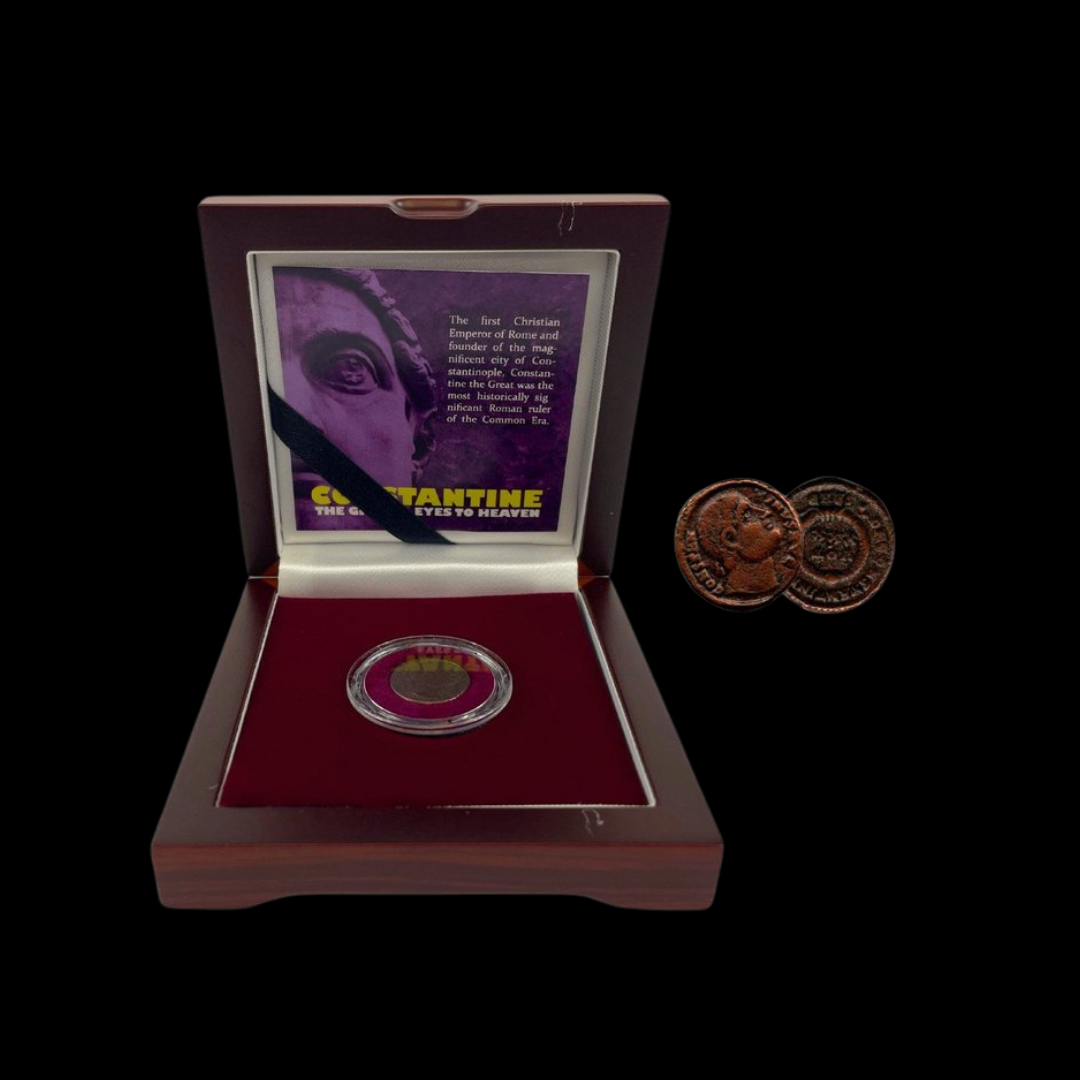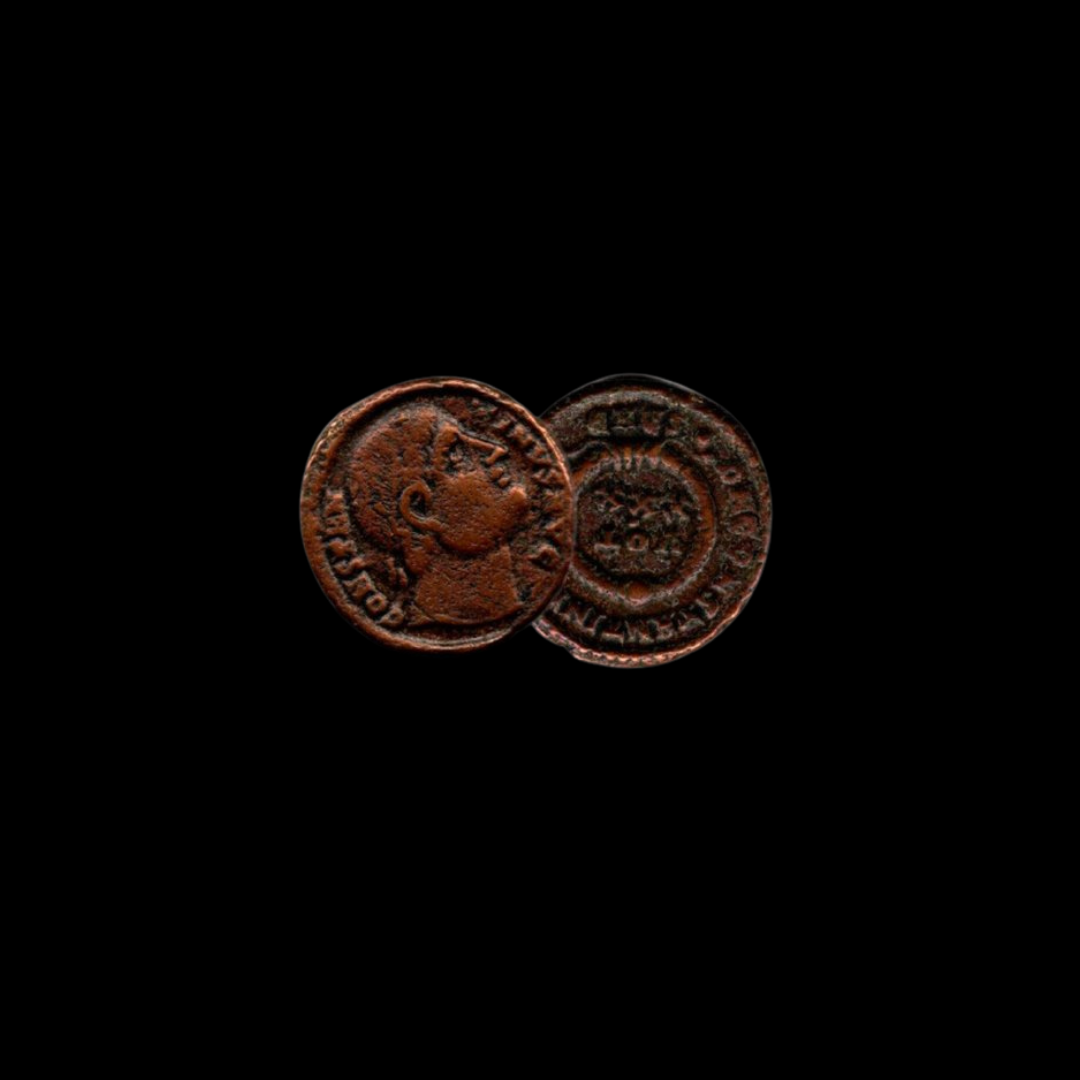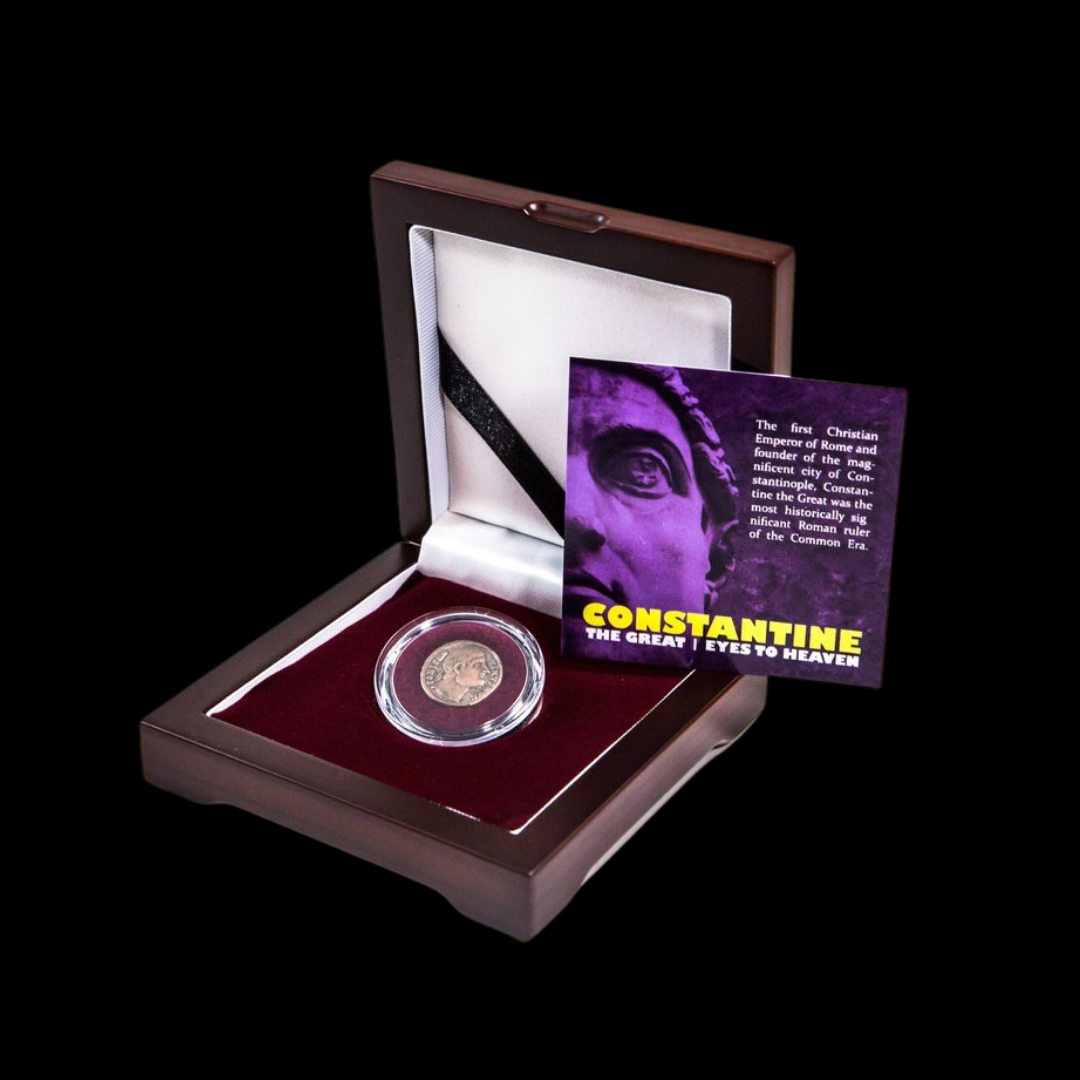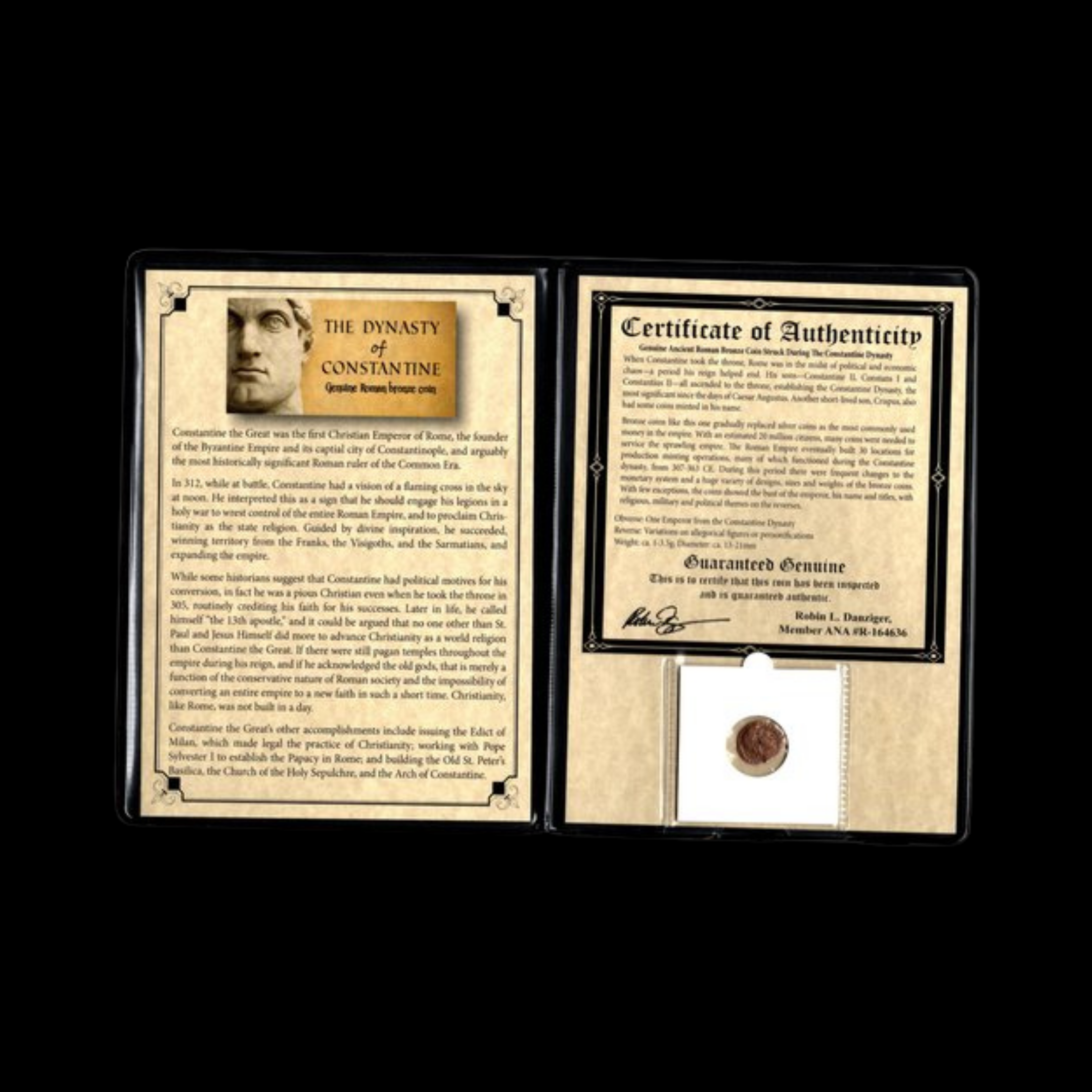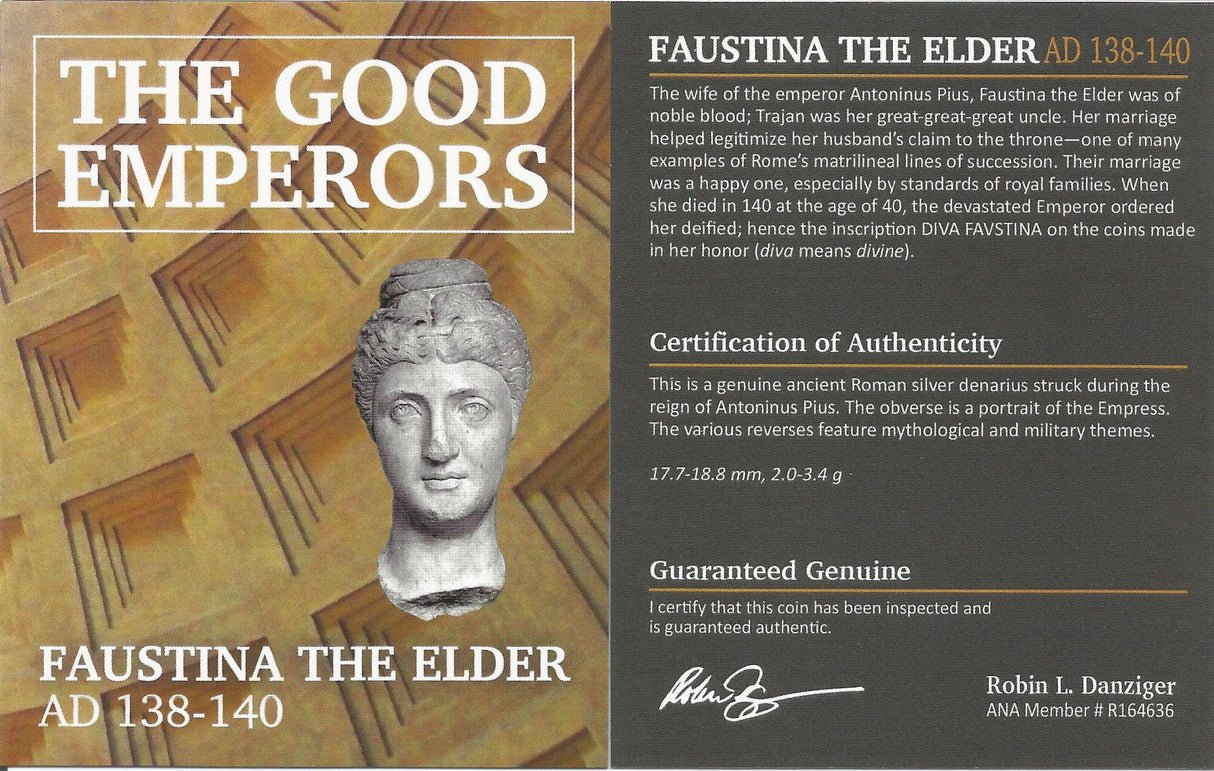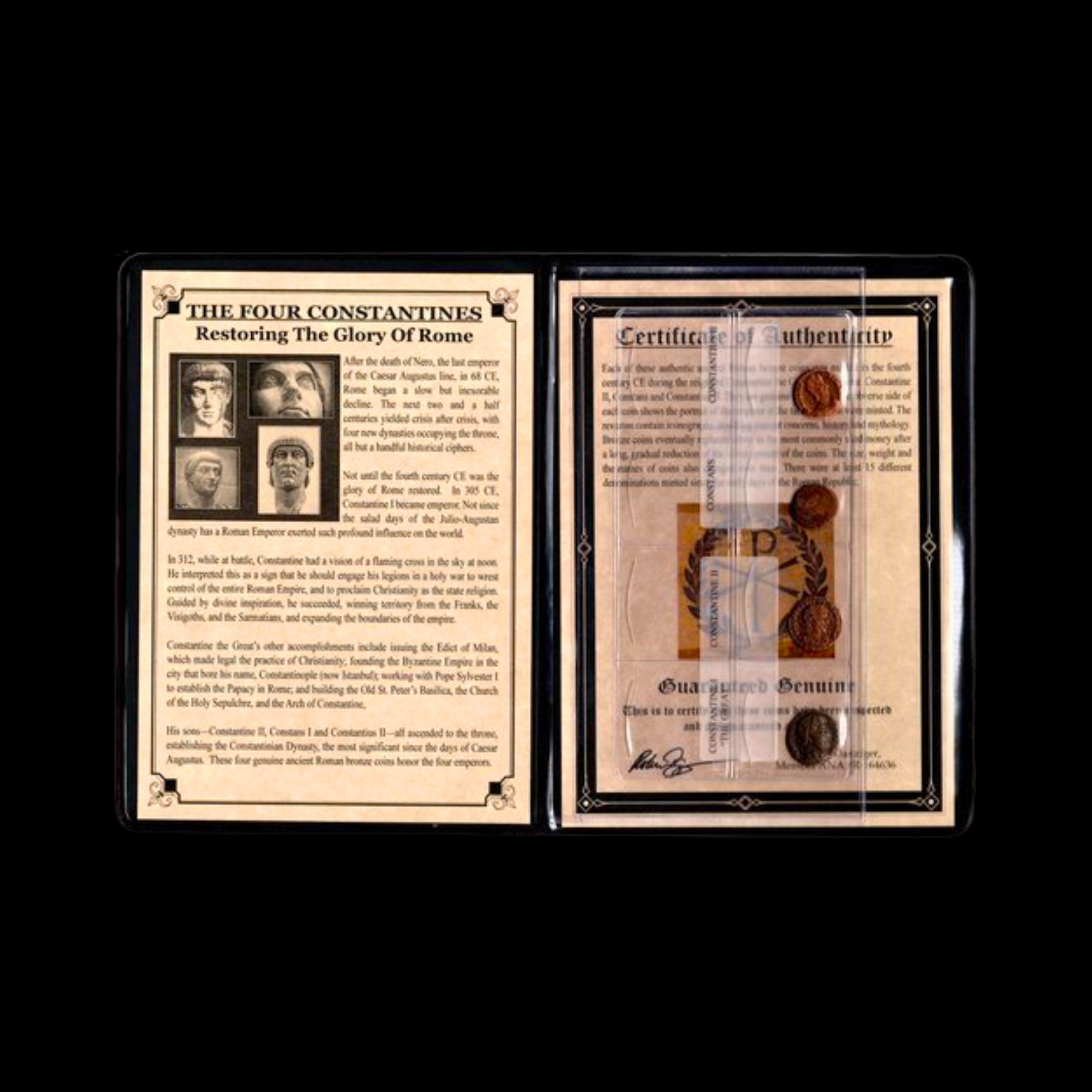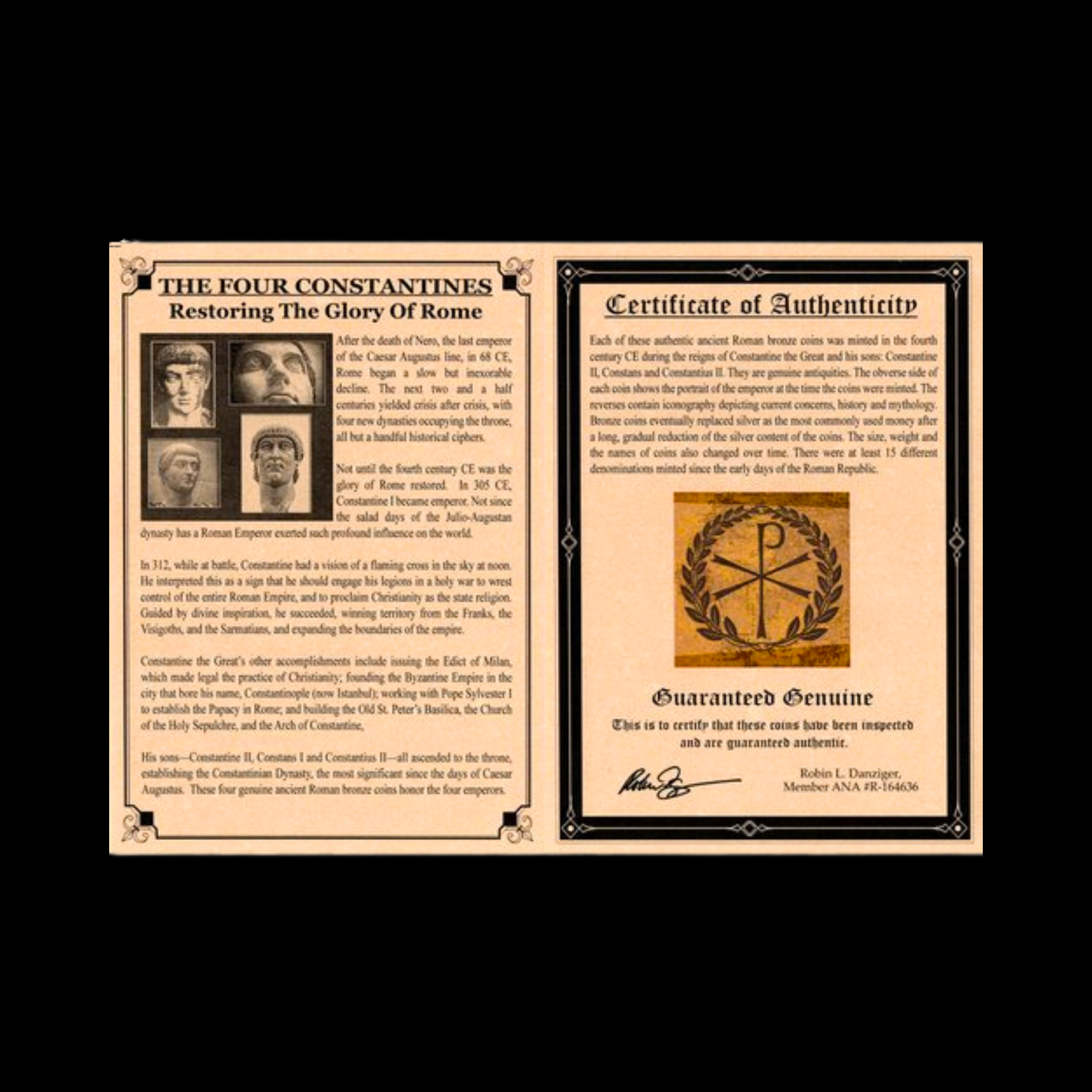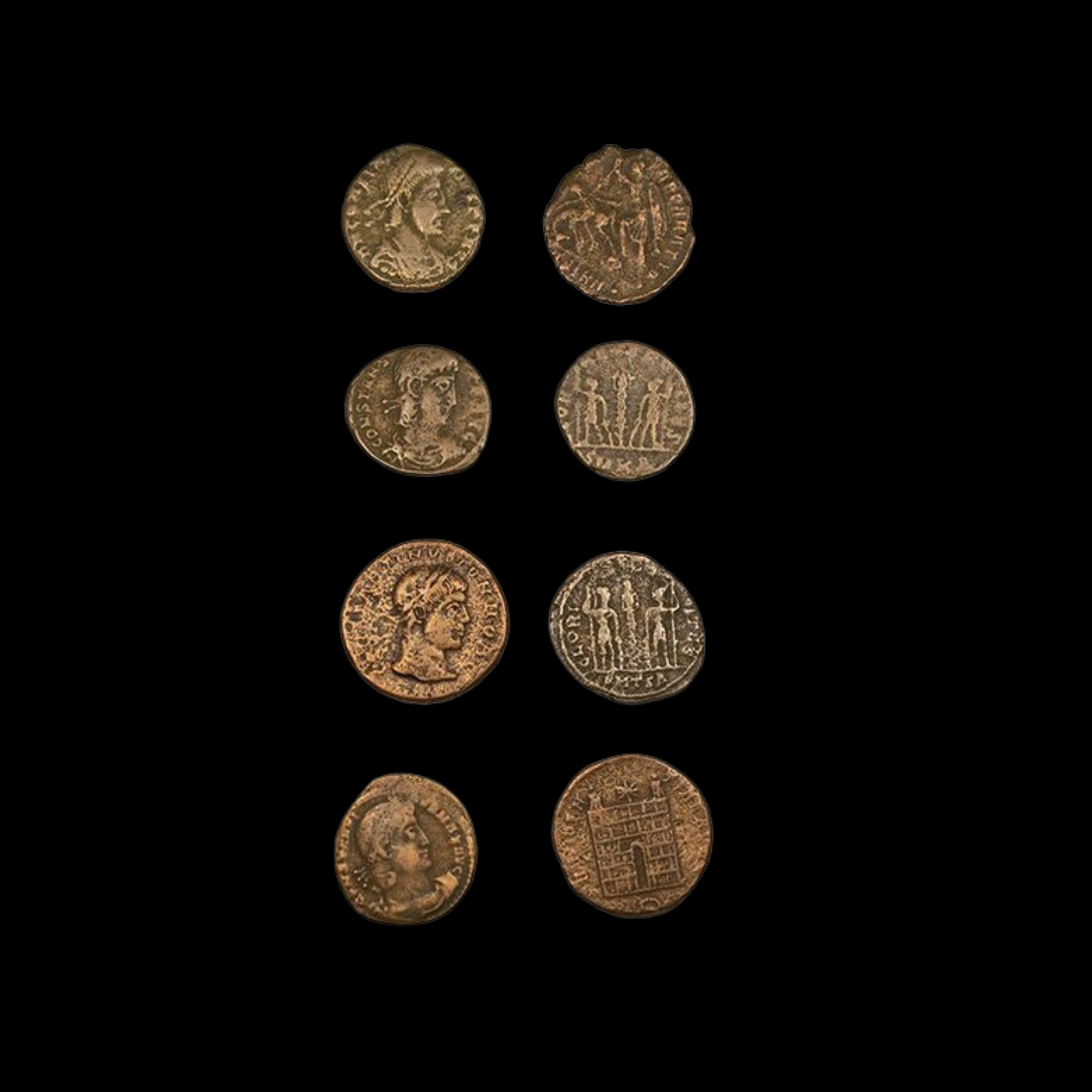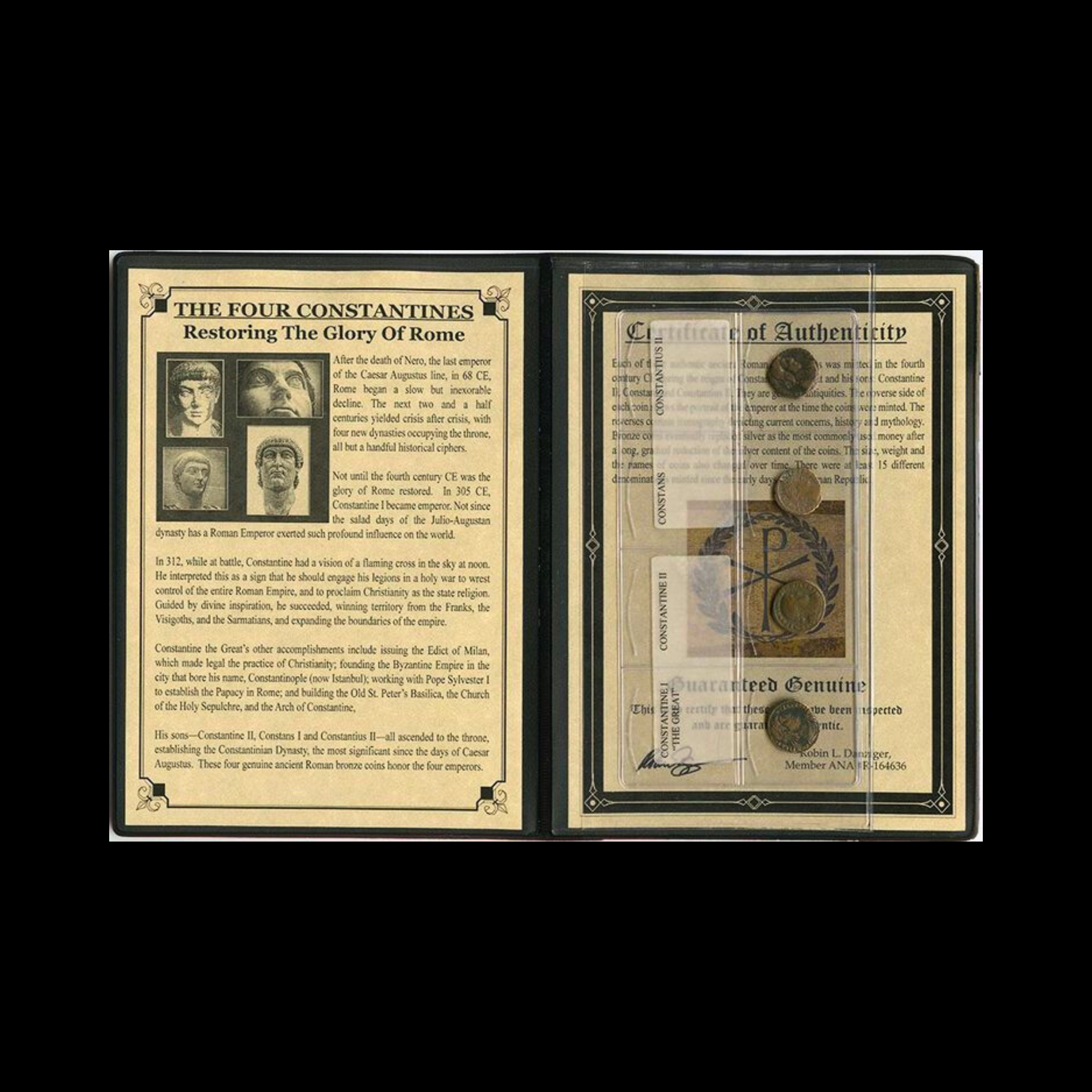 Image 1 of 8
Image 1 of 8

 Image 2 of 8
Image 2 of 8

 Image 3 of 8
Image 3 of 8

 Image 4 of 8
Image 4 of 8

 Image 5 of 8
Image 5 of 8

 Image 6 of 8
Image 6 of 8

 Image 7 of 8
Image 7 of 8

 Image 8 of 8
Image 8 of 8









Roman Bronze Coin of Licinius I (about 1,701-1,717 years ago)
This bronze coin was issued by Emperor Licinius I, who ruled the eastern portions of the Roman Empire first as co-emperor with Constantine the Great and later as his rival. The inscription "IOVI CONSERVATORI" (To Jupiter the Preserver) indicates Licinius's religious preferences during a time of shifting imperial religious policies.
Coin Description:
Front side: Portrait of Emperor Licinius I facing right, likely wearing a laurel wreath or diadem, with his name and imperial titles in Latin around the edge.
Back side: Probably features Jupiter standing, holding a Victory figure on a globe and a scepter, with the inscription "IOVI CONSERVATORI" (To Jupiter the Preserver).
Technical Details:
Bronze alloy composition
Denomination: Likely a follis or similar bronze denomination
Weight: Approximately 3-4 grams
Diameter: Approximately 19-22 mm
NGC Certified for authentication and preservation
Minted between 308-324 CE
Condition as specified by NGC certification
Historical Significance: Licinius's complex relationship with Constantine the Great shaped the religious and political landscape of the early 4th century Roman Empire. Though initially allies—cemented through Licinius's marriage to Constantine's half-sister Constantia—their cooperation produced the landmark Edict of Milan in 313 CE, officially legalizing Christianity throughout the empire. While Constantine increasingly favored Christianity, Licinius maintained traditional Roman religious practices, as evidenced by the Jupiter dedication on this coin. Their religious differences eventually contributed to their political rivalry, culminating in civil war. After his defeat at the Battle of Chrysopolis in 324 CE, Licinius was initially spared but later executed by hanging on Constantine's orders, despite their family connection. This coin represents the religious tensions that existed during this pivotal transitional period in Roman and religious history.
This bronze coin was issued by Emperor Licinius I, who ruled the eastern portions of the Roman Empire first as co-emperor with Constantine the Great and later as his rival. The inscription "IOVI CONSERVATORI" (To Jupiter the Preserver) indicates Licinius's religious preferences during a time of shifting imperial religious policies.
Coin Description:
Front side: Portrait of Emperor Licinius I facing right, likely wearing a laurel wreath or diadem, with his name and imperial titles in Latin around the edge.
Back side: Probably features Jupiter standing, holding a Victory figure on a globe and a scepter, with the inscription "IOVI CONSERVATORI" (To Jupiter the Preserver).
Technical Details:
Bronze alloy composition
Denomination: Likely a follis or similar bronze denomination
Weight: Approximately 3-4 grams
Diameter: Approximately 19-22 mm
NGC Certified for authentication and preservation
Minted between 308-324 CE
Condition as specified by NGC certification
Historical Significance: Licinius's complex relationship with Constantine the Great shaped the religious and political landscape of the early 4th century Roman Empire. Though initially allies—cemented through Licinius's marriage to Constantine's half-sister Constantia—their cooperation produced the landmark Edict of Milan in 313 CE, officially legalizing Christianity throughout the empire. While Constantine increasingly favored Christianity, Licinius maintained traditional Roman religious practices, as evidenced by the Jupiter dedication on this coin. Their religious differences eventually contributed to their political rivalry, culminating in civil war. After his defeat at the Battle of Chrysopolis in 324 CE, Licinius was initially spared but later executed by hanging on Constantine's orders, despite their family connection. This coin represents the religious tensions that existed during this pivotal transitional period in Roman and religious history.
This bronze coin was issued by Emperor Licinius I, who ruled the eastern portions of the Roman Empire first as co-emperor with Constantine the Great and later as his rival. The inscription "IOVI CONSERVATORI" (To Jupiter the Preserver) indicates Licinius's religious preferences during a time of shifting imperial religious policies.
Coin Description:
Front side: Portrait of Emperor Licinius I facing right, likely wearing a laurel wreath or diadem, with his name and imperial titles in Latin around the edge.
Back side: Probably features Jupiter standing, holding a Victory figure on a globe and a scepter, with the inscription "IOVI CONSERVATORI" (To Jupiter the Preserver).
Technical Details:
Bronze alloy composition
Denomination: Likely a follis or similar bronze denomination
Weight: Approximately 3-4 grams
Diameter: Approximately 19-22 mm
NGC Certified for authentication and preservation
Minted between 308-324 CE
Condition as specified by NGC certification
Historical Significance: Licinius's complex relationship with Constantine the Great shaped the religious and political landscape of the early 4th century Roman Empire. Though initially allies—cemented through Licinius's marriage to Constantine's half-sister Constantia—their cooperation produced the landmark Edict of Milan in 313 CE, officially legalizing Christianity throughout the empire. While Constantine increasingly favored Christianity, Licinius maintained traditional Roman religious practices, as evidenced by the Jupiter dedication on this coin. Their religious differences eventually contributed to their political rivalry, culminating in civil war. After his defeat at the Battle of Chrysopolis in 324 CE, Licinius was initially spared but later executed by hanging on Constantine's orders, despite their family connection. This coin represents the religious tensions that existed during this pivotal transitional period in Roman and religious history.
Valerius Licinianus Licinius (Greek: Λικίνιος; c. 265 – 325) was Roman emperor from 308 to 324. For most of his reign, he was the colleague and rival of Constantine I, with whom he co-authored the Edict of Milan that granted official toleration to Christians in the Roman Empire. He was finally defeated at the Battle of Chrysopolis (AD 324), and was later executed on the orders of Constantine I.
Born to a Dacian[3][4] peasant family in Moesia Superior, Licinius accompanied his close childhood friend and future emperor Galerius, on the Persian expedition in 298.[3] He was trusted enough by Galerius that in 307 he was sent as an envoy to Italy, to attempt to reach some sort of agreement with the usurper Maxentius.[3] When Galerius went to deal with Maxentius personally after the death of Severus II, he left the eastern provinces in Licinius' care.[5]


